Front seat adjustment
Forward and rearward
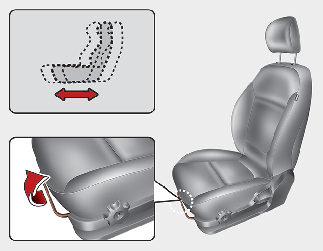
To move the seat forward or rearward:
-
Pull the seat slide adjustment lever up and hold it.
-
Slide the seat to the position you desire.
-
Release the lever and make sure the seat is locked in place.
Adjust the seat before driving, and make sure the seat is locked securely by trying to move forward and rearward without using the lever. If the seat moves, it is not locked properly.
Seatback angle
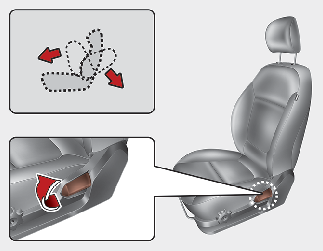
To recline the seatback:
-
Lean forward slightly and lift up on the seatback recline lever.
-
Carefully lean back on the seat and adjust the seatback of the seat to the position you desire.
-
Release the lever and make sure the seatback is locked in place.(The lever MUST return to its original position for the seatback to lock.)
Seat cushion tilt (if equipped)
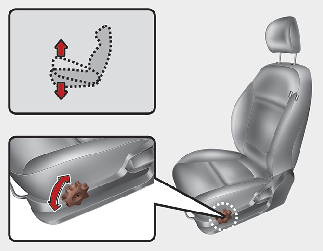
Turn the control knob forward or backward to move the seat cushion to upwards or downwards.
-
To lower the seat cushion, turn the control knob counterclockwise.
-
To raise the seat cushion, turn the control knob clockwise.
Seat Armrest (Driver seat)
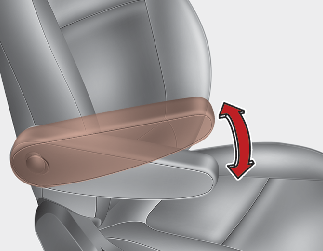
Armrest can be used by pulling it from seat back when necessary.Return it to the original position after use.

Do not operate this system while driving. It could lead to a serious accident resulting from distracted driving.
Headrest
For Front Headrest
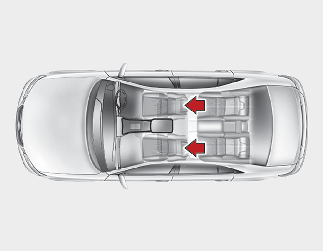
The driver's and front passenger's seats are equipped with a headrest for the occupant's safety and comfort.
The headrest not only provides comfort for the driver and front passenger, but also helps to protect the head and neck in the event of a collision.

-
For maximum effectiveness incase of an accident, the headrest should be adjusted so the middle of the headrest is at the same height as the center of gravity of an occupant's head. Generally, the center of gravity of most people's head is similar with the height of the top of their eyes. Also, adjust the headrest as close to your head as possible. For this reason, the use of a cushion that holds the body away from the seatback is not recommended.
-
Do not operate the vehicle with the headrests removed as severe injury to the occupants may occur in the event of an accident. Headrests may provide protection against neck injuries when properly adjusted.
-
Do not adjust the headrest position of the driver's seat while the vehicle is in motion.
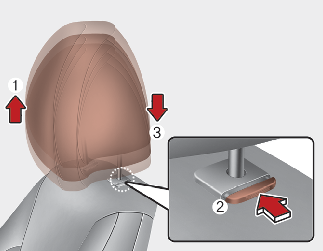
To raise the headrest, pull it up to the desired position (1). To lower the headrest, push and hold the release button (2) on the headrest support and lower the headrest to the desired position (3).
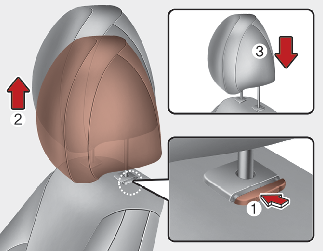
To remove the headrest, raise it as far as it can go then press the release button (1) while pulling upward (2).
To reinstall the headrest, put the headrest poles (3) into the holes while pressing the release button (1). Then adjust it to the appropriate height.

Make sure the headrest locks in position after adjusting it to properly protect the occupants.
For Rear Headrest (if equipped)
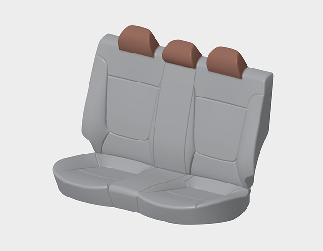
The rear seat is equipped with head-rests for the occupant's safety and comfort.
The headrest not only provides comfort for passengers, but also helps to protect the head and neck in the event of a collision.